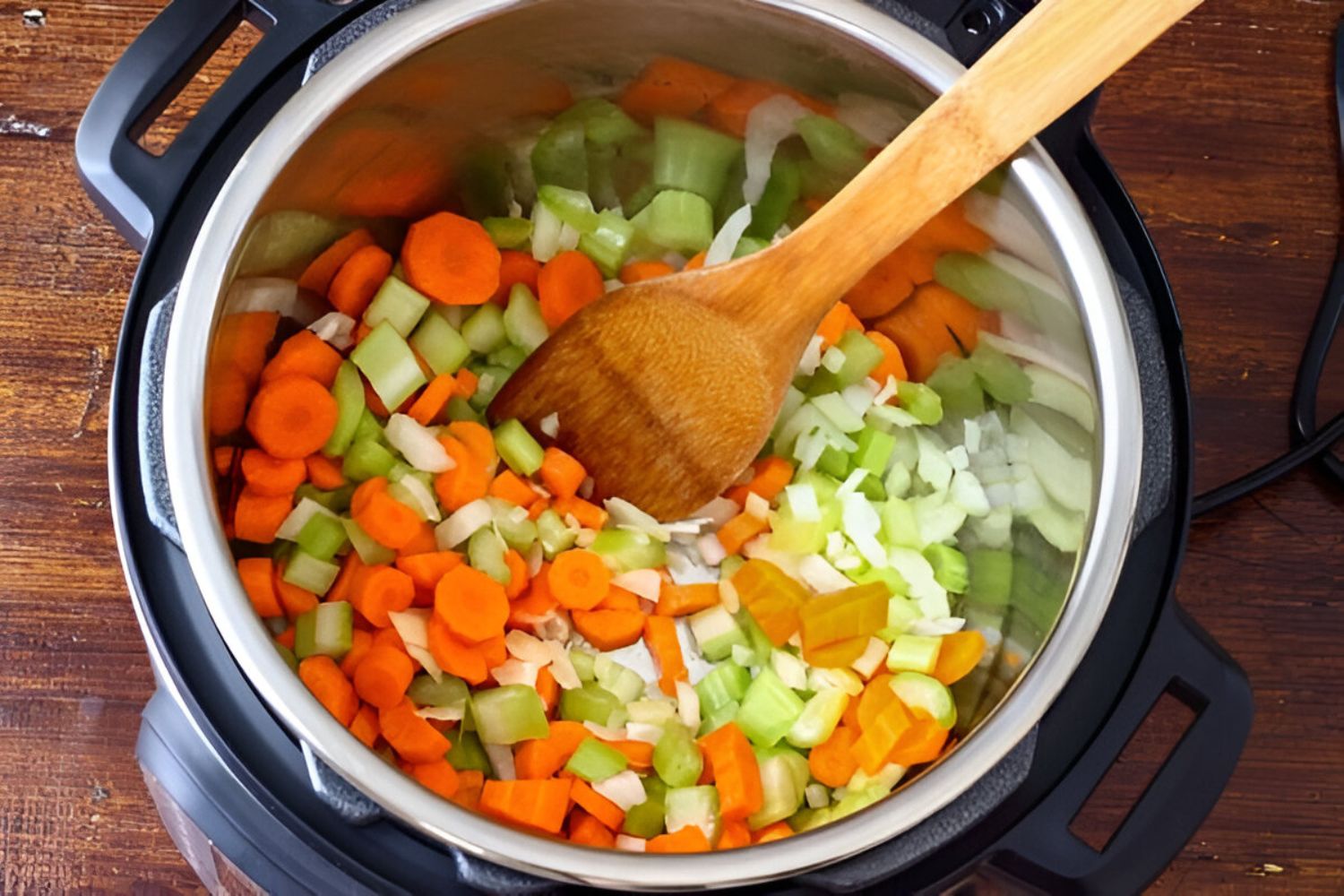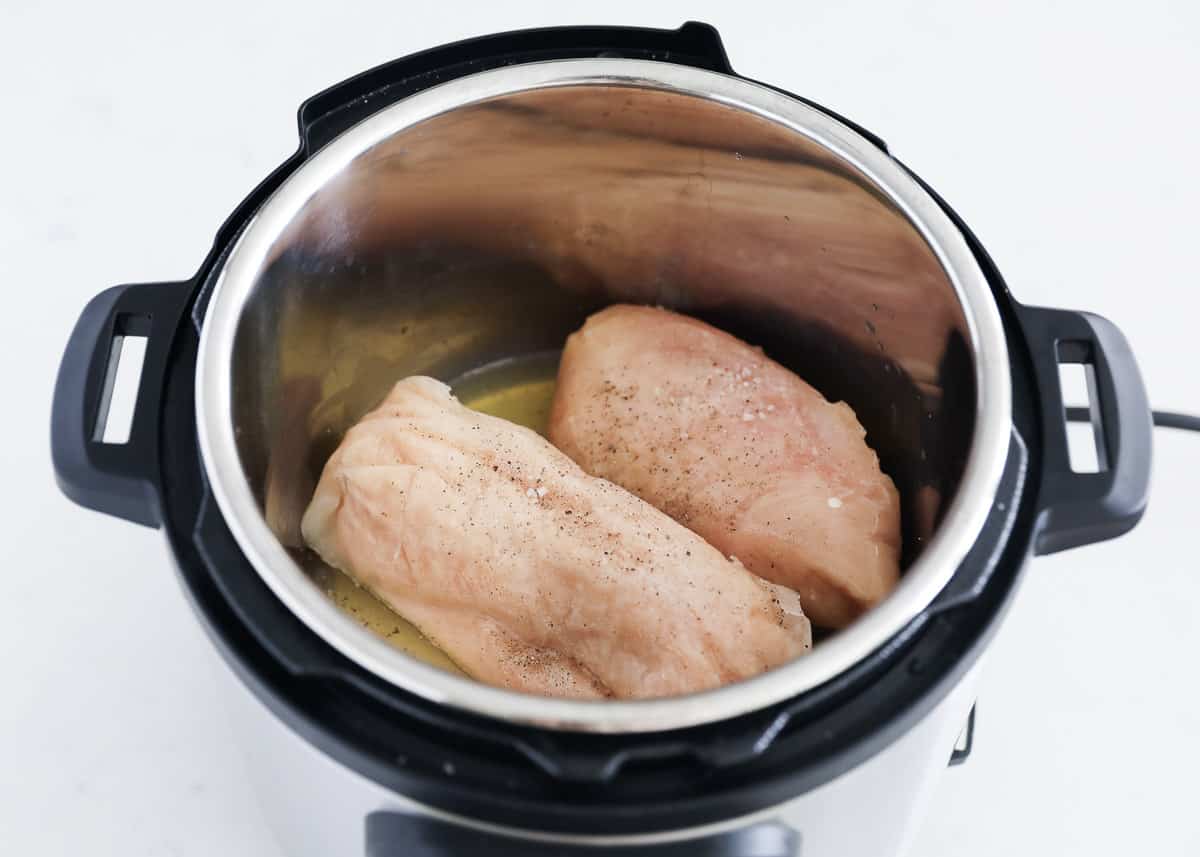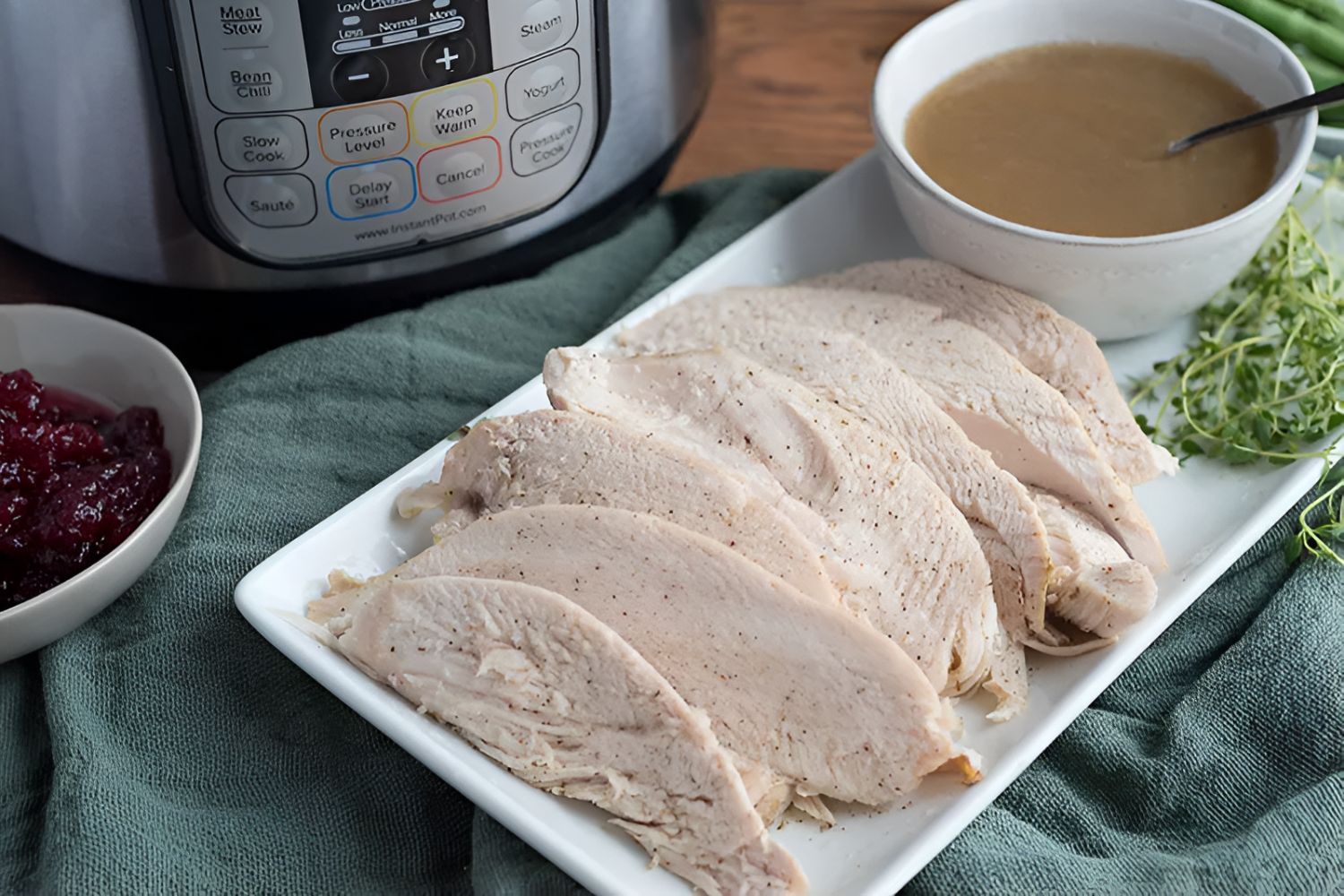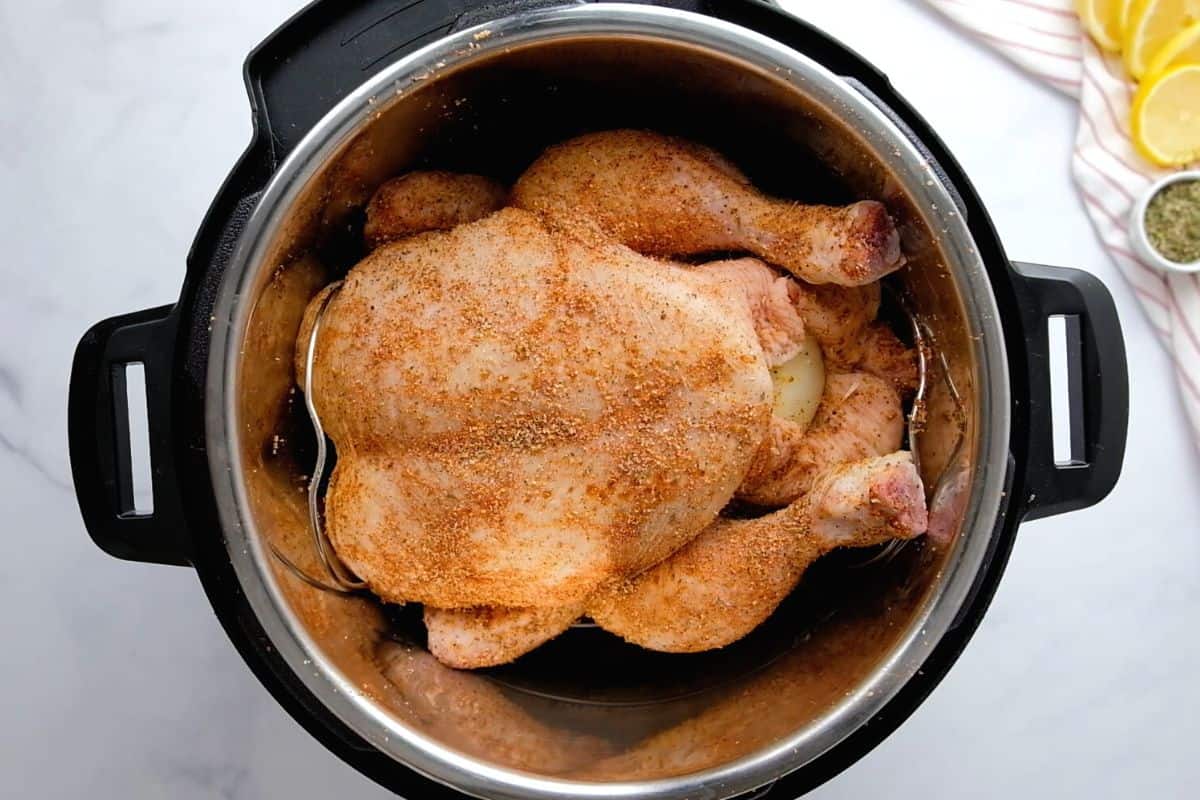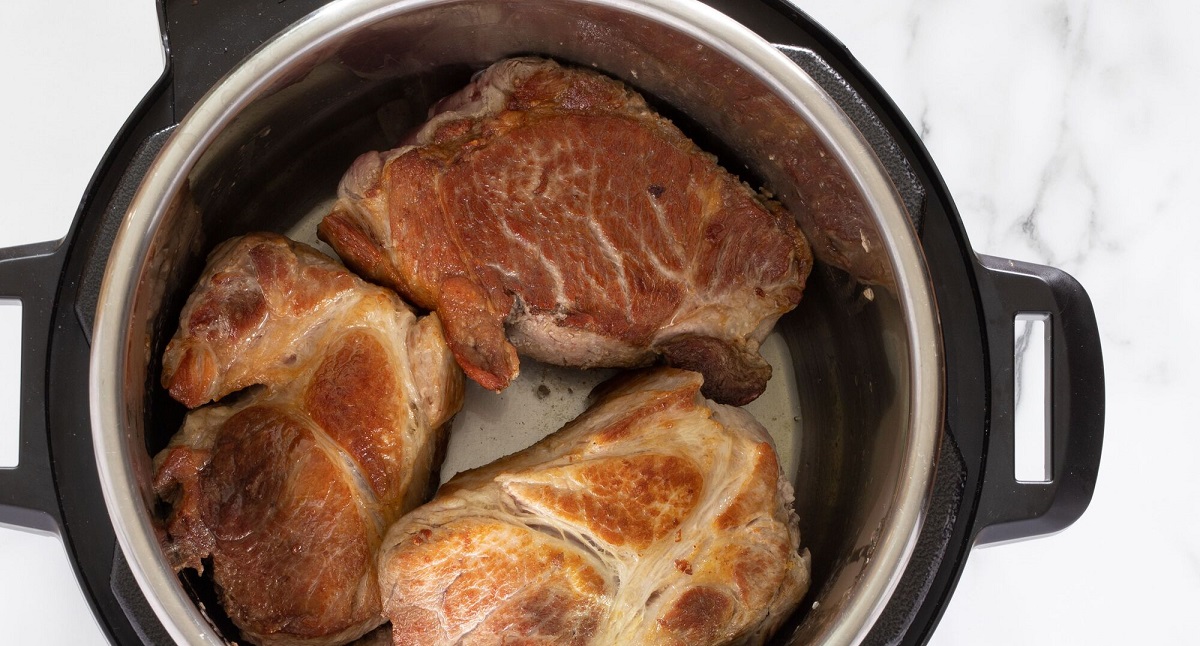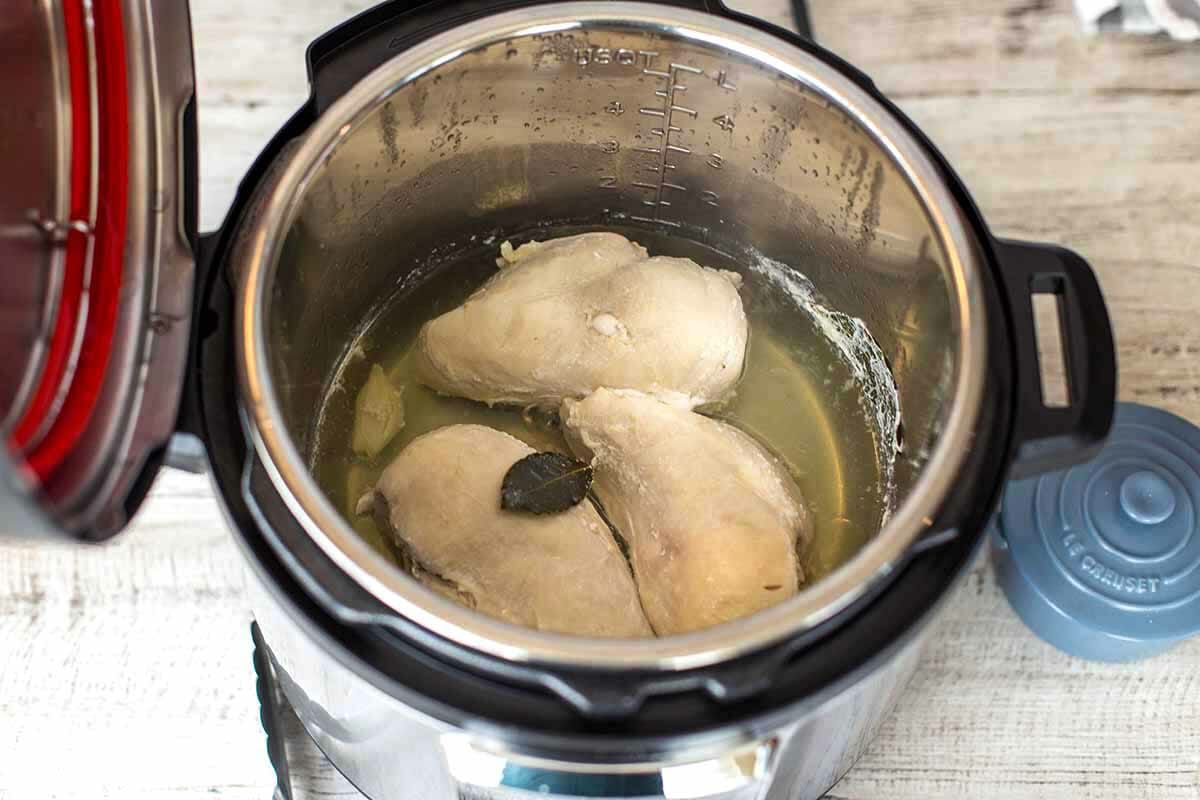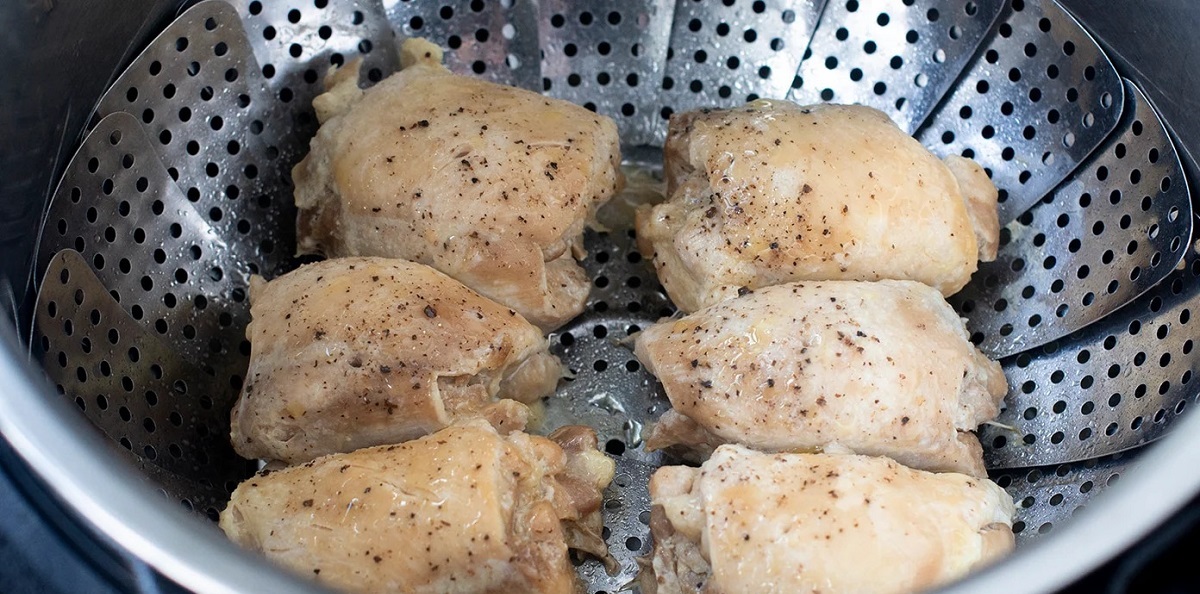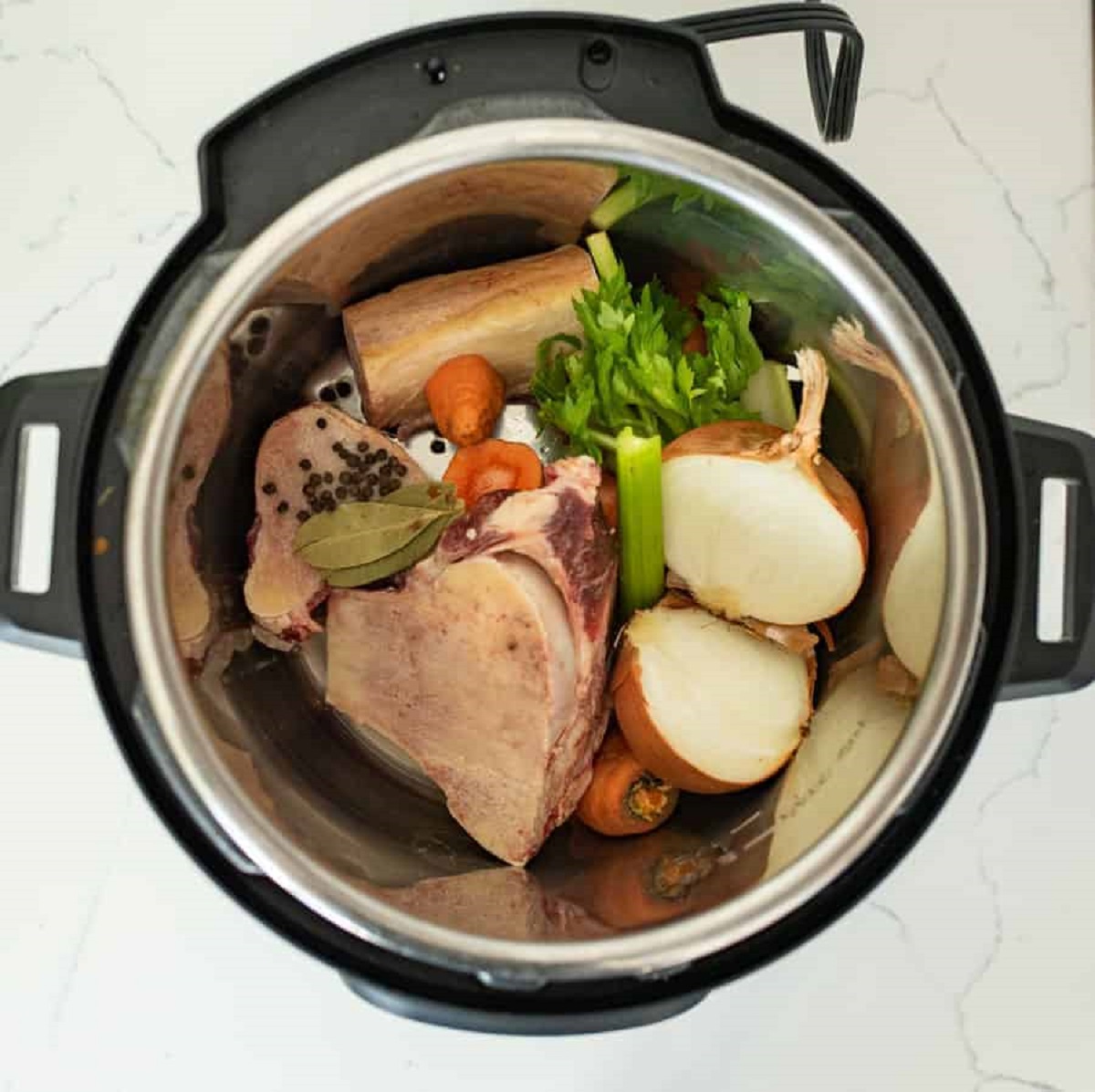Introduction
Welcome to the world of convenient and nutritious cooking with an electric pressure cooker. In this article, we will explore how to make delicious and perfectly cooked frozen vegetables using your electric pressure cooker.
Electric pressure cookers have gained immense popularity in recent years due to their ability to cook food quickly and efficiently. They are known for their versatility and ability to cook a wide range of dishes, and frozen vegetables are no exception.
Using an electric pressure cooker to cook frozen vegetables has numerous benefits. Firstly, it saves time. With traditional cooking methods, frozen vegetables can take a considerable amount of time to thaw and cook. However, using an electric pressure cooker significantly reduces cooking time, allowing you to enjoy your favorite vegetables in a fraction of the time.
Secondly, electric pressure cookers help to retain the nutritional value of frozen vegetables. The high-pressure environment in the cooker helps to preserve nutrients, vitamins, and minerals that can be lost through other cooking methods. This means that not only are you saving time, but you are also maximizing the nutritional benefits of your meal.
Furthermore, electric pressure cookers are incredibly easy to use. They come with intuitive buttons and user-friendly interfaces, making them accessible to even novice cooks. With just a few simple steps, you can have perfectly cooked frozen vegetables that will delight your taste buds.
So, whether you’re a busy professional looking for a quick and healthy meal option, or a health-conscious individual seeking to incorporate more vegetables into your diet, an electric pressure cooker is the perfect tool for cooking frozen vegetables.
In the next sections, we will guide you through the process of selecting the right frozen vegetables, preparing your electric pressure cooker, cooking frozen vegetables to perfection, and even adding flavorful seasonings. Get ready to discover the wonders of cooking frozen vegetables with your electric pressure cooker!
Benefits of Using an Electric Pressure Cooker for Frozen Vegetables
Cooking frozen vegetables in an electric pressure cooker offers a range of benefits that make it the ideal method for preparing these nutritious and convenient ingredients. Here are some key benefits of using an electric pressure cooker for frozen vegetables:
- Time-Saving: One of the greatest advantages of using an electric pressure cooker is the significant time savings it provides. With traditional cooking methods, thawing and cooking frozen vegetables can take a considerable amount of time. However, an electric pressure cooker utilizes high-pressure steam to cook food quickly, reducing the cooking time by up to 70%. You can enjoy flavorful and tender frozen vegetables in a fraction of the time.
- Nutritional Value: Electric pressure cookers are known for their ability to retain the nutritional value of food, and frozen vegetables are no exception. The high-pressure environment in the cooker helps to preserve the nutrients, vitamins, and minerals that can be lost through other cooking methods. This means that your frozen vegetables will not only be delicious but also packed with essential nutrients.
- Convenience: An electric pressure cooker offers unmatched convenience in the kitchen. With just a few simple steps, you can have perfectly cooked frozen vegetables without the need for constant monitoring. Once you set the cooking time and pressure, you can focus on other tasks or relax while the cooker does the work for you. It’s a hassle-free and hands-off cooking method.
- Flavorful Results: Cooking frozen vegetables in an electric pressure cooker allows for the perfect balance of flavor and texture. The high-pressure steam infuses the vegetables, enhancing their natural taste. Additionally, the quick cooking time helps the vegetables to retain their crispness and vibrant colors, resulting in visually appealing and delicious dishes.
- Versatility: Electric pressure cookers are versatile and can be used to cook a wide variety of frozen vegetables. Whether you prefer broccoli, cauliflower, peas, or mixed vegetables, your electric pressure cooker can handle them all. You can experiment with different combinations and flavors to create personalized vegetable dishes that suit your taste preferences.
By utilizing an electric pressure cooker for cooking frozen vegetables, you can enjoy the benefits of time-savings, preserved nutritional value, convenience, flavorful results, and versatility. Now, let’s move on to the next section, where we’ll guide you in choosing the right frozen vegetables for your cooking adventures.
Choosing the Right Frozen Vegetables
When it comes to cooking frozen vegetables in an electric pressure cooker, choosing the right vegetables is crucial to ensure a delicious and satisfying meal. Here are some factors to consider when selecting frozen vegetables for your cooking adventures:
- Quality: Look for frozen vegetables that are of high quality. Check the packaging for any signs of freezer burn or ice crystals, as these can indicate poor quality. Opt for vegetables that are individually quick-frozen, as this helps to preserve their texture and flavor.
- Variety: The beauty of using an electric pressure cooker is the ability to experiment with different vegetables. Consider your personal preferences and the flavors you enjoy. Whether it’s broccoli, carrots, green beans, or a medley of mixed vegetables, choose a variety that suits your taste and complements your meal.
- Preparation: Some frozen vegetables come pre-cut or pre-seasoned, while others may require additional preparation. Consider the level of convenience you desire and the amount of time you’re willing to invest in preparation. If you’re looking for a quick and hassle-free option, choose vegetables that require minimal prep work.
- Organic vs. Conventional: If you prefer organic produce, look for frozen vegetables that are labeled as organic. They are free from synthetic pesticides and genetically modified organisms. However, conventional frozen vegetables can also be a nutritious and budget-friendly choice, so it ultimately depends on your preferences and dietary needs.
- Special Dietary Needs: If you have specific dietary needs or restrictions, such as a gluten-free or vegan diet, be sure to read the labels carefully. Some frozen vegetable products may contain added ingredients or seasonings that may not align with your dietary requirements.
Remember, the quality and variety of the frozen vegetables you choose will have a significant impact on the outcome of your dish. Take your time to explore different options and find the perfect vegetables that will elevate your cooking with an electric pressure cooker. With the right selection in hand, let’s move on to the next section to prepare your electric pressure cooker for cooking frozen vegetables.
Preparing the Electric Pressure Cooker
Before you start cooking your frozen vegetables in an electric pressure cooker, it’s important to ensure that your cooker is properly prepared. Proper preparation will help to ensure safe and efficient cooking. Here are the steps to prepare your electric pressure cooker:
- Read the Manual: Familiarize yourself with the instruction manual specific to your electric pressure cooker model. It will provide you with essential information about the cooker’s functions, safety guidelines, and recommended cooking times for different types of food.
- Clean the Cooker: Clean the cooking pot, lid, and any detachable parts of the electric pressure cooker before use. Wash them with warm, soapy water, and dry thoroughly. This will help prevent any residual flavors or contaminants from affecting the taste of your frozen vegetables.
- Inspect the Sealing Ring: Check the sealing ring, which is a rubber gasket that helps create a tight seal between the lid and the pot. Ensure that it is clean and properly fitted in place. If it shows signs of wear or damage, replace it with a new one to prevent steam from escaping during cooking.
- Add Liquid: Most electric pressure cookers require a minimum amount of liquid to build pressure. Read your cooker’s manual to determine the recommended minimum amount of liquid. Typically, water, vegetable broth, or any other liquid specified in your recipe can be used to provide the necessary moisture for cooking.
- Test the Pressure Release Valve: Ensure that the pressure release valve is in good working condition. It should move freely and seal tightly when closed. This valve regulates the pressure inside the cooker and must be functioning properly for safe cooking.
- Assemble the Cooker: Once you have completed the above steps, reassemble the electric pressure cooker by placing the clean cooking pot back into the base and securely attaching the lid. Ensure that the lid is properly aligned and locked in place before proceeding.
By properly preparing your electric pressure cooker, you set the stage for successful and hassle-free cooking of your frozen vegetables. Now that your cooker is ready to go, let’s move on to the next section, where we’ll delve into the cooking process itself.
Cooking Frozen Vegetables in an Electric Pressure Cooker
Now that your electric pressure cooker is prepared, it’s time to dive into the cooking process for your frozen vegetables. Follow these steps to achieve perfectly cooked and flavorful results:
- Add Liquid: Start by pouring the recommended amount of liquid, such as water or vegetable broth, into the electric pressure cooker. The liquid will create steam, which is essential for cooking the frozen vegetables.
- Add the Vegetables: Carefully add the desired amount of frozen vegetables into the cooking pot. It’s important not to exceed the maximum fill line indicated in your cooker’s manual to allow proper circulation of steam and for the vegetables to cook evenly.
- Seasoning: If desired, season your frozen vegetables with herbs, spices, or other flavorings. This step is optional but can add an extra layer of taste to your dish. Experiment with different seasonings to find combinations that complement the natural flavors of the vegetables.
- Close and Lock the Lid: Ensure that the lid is securely locked in place. This will create a sealed cooking environment, allowing the pressure to build up and cook the vegetables evenly. Refer to your cooker’s manual for instructions on how to properly lock the lid.
- Select the Cooking Time: Set the cooking time according to the specific type of frozen vegetables you are using. Leafy greens like spinach or kale may require only a few minutes, while denser vegetables like carrots or corn may need longer cooking times. Consult your cooker’s manual for recommended cooking times or refer to specific recipes for guidance.
- Set the Pressure Level: Depending on your cooker’s settings, select the appropriate pressure level. Many electric pressure cookers have a high-pressure setting, which is suitable for cooking most frozen vegetables. This high-pressure environment will ensure quick and efficient cooking.
- Start Cooking: Once you’ve set the cooking time and pressure level, start the cooking process by pressing the appropriate buttons on your electric pressure cooker. The cooker will begin to heat up, and the pressure will build, cooking the frozen vegetables to perfection.
- Release Pressure: After the cooking time has elapsed, you have two options for releasing the pressure: quick-release or natural-release method. The method you choose will depend on your recipe and personal preference.
Cooking frozen vegetables in an electric pressure cooker is a breeze, thanks to its efficient and time-saving features. Once you have mastered the cooking process, you can explore different flavors and combinations to create delectable vegetable dishes. In the next section, we will delve into the differences between the quick-release and natural-release methods of releasing pressure.
Quick-release vs Natural-release Methods
When cooking frozen vegetables in an electric pressure cooker, you have two options for releasing the pressure after the cooking time is complete: the quick-release method or the natural-release method. Let’s explore the differences between these two methods:
- Quick-release Method: The quick-release method involves manually releasing the pressure inside the cooker by turning the pressure release valve. This allows the steam to escape rapidly, and the pressure inside the cooker reduces quickly. To perform a quick-release, carefully turn the pressure release valve from the sealed position to the venting position, following the instructions in your cooker’s manual. Be cautious of the hot steam that will be released, and ensure your hand is away from the valve to avoid any potential burns. This method is ideal when you want to stop the cooking process immediately or when your vegetables require a shorter cooking time to avoid overcooking.
- Natural-release Method: The natural-release method involves allowing the pressure inside the cooker to gradually decrease on its own over a period of time. After the cooking time is complete, simply leave the cooker untouched and let it sit for a specified period, typically around 10-15 minutes. During this time, the pressure will release naturally, and the temperature will gradually drop. This method is suited for recipes that benefit from longer cooking times and require the vegetables to continue cooking in residual heat. It is also safer when dealing with foamy or starchy foods that can cause spewing and clog the release valve.
The choice between the quick-release and natural-release method will depend on the specific recipe you are using and the desired texture of your frozen vegetables. For delicate vegetables that can easily become overcooked, such as peas or broccoli, the quick-release method is often preferred to immediately halt the cooking process and preserve their crispness. On the other hand, for heartier vegetables that benefit from further softening, like root vegetables or corn, the natural-release method allows for additional cooking and ensures a tender texture.
It’s important to follow the instructions in your electric pressure cooker’s manual to ensure you perform the correct release method safely. Additionally, be cautious when removing the lid after releasing the pressure, as hot steam may still be present. Use oven mitts or a kitchen towel to protect your hands from any residual heat.
Now that you are familiar with the quick-release and natural-release methods, let’s move on to the next section and explore how to add seasoning and flavor to your cooked frozen vegetables.
Seasoning and Adding Flavor to Frozen Vegetables
While frozen vegetables are nutritious on their own, adding seasoning and flavors can take them to the next level in terms of taste and enjoyment. Here are some ideas for seasoning and enhancing the flavor of your cooked frozen vegetables:
- Herbs and Spices: Experiment with a variety of herbs and spices to enhance the natural flavors of your vegetables. Popular options include garlic powder, onion powder, paprika, oregano, thyme, rosemary, and cumin. Sprinkle these seasonings over the cooked vegetables or mix them with a little oil before adding them to the cooker.
- Citrus Zest: Adding a touch of citrus zest can provide a refreshing and bright flavor to your frozen vegetables. Grate the zest of lemon, lime, or orange over the vegetables before cooking, or squeeze a little citrus juice on top after they are cooked for an extra burst of flavor.
- Sauces and Condiments: If you’re craving more depth of flavor, consider adding sauces or condiments to your cooked frozen vegetables. Soy sauce, balsamic vinegar, Worcestershire sauce, honey mustard, or a drizzle of olive oil can all lend a delicious savory or tangy taste to the vegetables.
- Cheese: For a decadent and creamy addition, sprinkle grated cheese over your cooked frozen vegetables. Parmesan, cheddar, feta, or goat cheese can add richness and depth of flavor. Let the residual heat of the vegetables melt the cheese slightly, or place them under the broiler for a few minutes to achieve a golden and melty topping.
- Nuts and Seeds: Adding a crunchy element to your frozen vegetables can provide a delightful texture and nutty flavor. Toasted almonds, pine nuts, sesame seeds, or crushed walnuts can be sprinkled over the cooked vegetables for an added nutritional boost and a satisfying crunch.
- Fresh Herbs: Don’t overlook the power of fresh herbs to elevate the taste of your cooked frozen vegetables. Finely chop herbs like parsley, cilantro, basil, or mint and sprinkle them over the vegetables right before serving. The vibrant and aromatic flavors of fresh herbs can add a burst of freshness to the dish.
Remember, seasoning is subjective, so feel free to adjust the amounts to suit your personal taste preferences. It’s always a good idea to taste the cooked vegetables before serving and adjust the seasoning as needed. With these seasoning and flavor-enhancing ideas, you can transform plain frozen vegetables into delectable and satisfying dishes that will keep you coming back for more.
In the next section, we will provide some helpful tips for cooking different types of frozen vegetables in your electric pressure cooker. So, let’s keep the culinary journey going!
Tips for Cooking Different Types of Frozen Vegetables
While cooking frozen vegetables in an electric pressure cooker is a convenient and efficient method, different types of vegetables may require slight adjustments in cooking time and preparation. Here are some useful tips to achieve optimal results when cooking different types of frozen vegetables:
- Leafy Greens (Spinach, Kale): Leafy greens cook quickly and can easily become overcooked. For best results, use the quick-release method and reduce the cooking time to just a few minutes to retain their vibrant color and texture. You can add a splash of lemon juice or vinegar after cooking to help preserve their vibrant green color.
- Dense Vegetables (Carrots, Cauliflower): Denser vegetables require slightly longer cooking times to become tender. Increase the cooking time by a few minutes, and depending on personal preference, you can opt for either the quick-release or natural-release method. To add some extra flavor, consider adding herbs, spices, or a drizzle of sauce during cooking.
- Root Vegetables (Potatoes, Sweet Potatoes): Root vegetables are firm and can take longer to cook. For evenly cooked results, cut them into smaller, bite-sized pieces before cooking. The natural-release method works well for root vegetables, allowing them to simmer gently in the residual heat. Pierce them with a fork to check for tenderness before serving.
- Mixed Vegetables: If using a mix of vegetables, ensure that their cooking times are compatible. If some vegetables require a longer cooking time, it may be helpful to partially thaw them before cooking to ensure all the vegetables are evenly cooked. Adjust the cooking time accordingly to avoid overcooking or undercooking any of the vegetables.
- Peas and Corn: Delicate vegetables like peas and corn cook quickly and can easily become mushy if overcooked. Use the quick-release method for these vegetables, and reduce the cooking time to 1-2 minutes to maintain their crispness and natural sweetness. Add them to the cooker towards the end of the cooking time, or simply let the residual heat warm them through.
Remember to check the manufacturer’s manual for any specific instructions or recommendations for cooking different types of frozen vegetables in your electric pressure cooker. Adjustments in cooking times may be necessary based on personal preference, the size of the vegetable pieces, and the desired tenderness.
By following these tips, you’ll be able to cook a variety of frozen vegetables with confidence, ensuring they are perfectly cooked and bursting with flavor. In the next section, we will discuss some important safety precautions to keep in mind while cooking frozen vegetables in an electric pressure cooker. Let’s continue cooking safely!
Safety Precautions While Cooking Frozen Vegetables
Cooking frozen vegetables in an electric pressure cooker is generally safe and convenient, but it’s important to keep a few safety precautions in mind to ensure a smooth cooking experience. Here are some key safety tips to follow when cooking frozen vegetables in your electric pressure cooker:
- Read the Manual: Familiarize yourself with the instruction manual provided by the manufacturer of your electric pressure cooker. It will contain important safety guidelines and specific instructions for operating your particular model. Adhering to the manual’s guidelines will help ensure safe and efficient cooking.
- Do Not Overfill: It’s crucial not to exceed the maximum fill line indicated in your electric pressure cooker’s pot. Overfilling can prevent proper pressure buildup and increase the risk of food splattering out of the release valve during cooking. Cook in batches if necessary to avoid overfilling the cooker.
- Ensure Proper Sealing: Before starting the cooking process, double-check that the lid is properly aligned and locked in place. This ensures a proper seal, preventing steam from escaping during cooking. An improper seal can lead to undercooked or unevenly cooked vegetables and may compromise safety.
- Use Sufficient Liquid: Adding the recommended amount of liquid, such as water or broth, is crucial for creating the necessary steam pressure inside the cooker. Inadequate liquid can result in the cooker not pressurizing correctly, increasing the risk of burning or scorching the vegetables. Follow the cooker’s manual for specific liquid requirements.
- Minimize Foaming: Some vegetables, particularly starchy ones, may produce foam during cooking, which can clog the pressure release valve. To minimize foaming, it’s recommended to partially thaw starchy vegetables or add a small amount of cooking oil to the liquid before cooking. This will help prevent excessive foam buildup and ensure the pressure release valve functions properly.
- Be Cautious of Hot Steam: When releasing the pressure after cooking, whether using the quick-release or natural-release method, be cautious of the hot steam that will be released. Keep your hands and face away from the pressure release valve to avoid potential burns. Always use oven mitts or a kitchen towel to safely handle the hot cooker and its components.
- Properly Ventilate: Ensure that your cooking area is well-ventilated during and after using the electric pressure cooker. Open a window or turn on the kitchen exhaust fan to prevent any lingering steam or odors from accumulating in your kitchen. This will also help maintain a comfortable and safe environment while cooking.
Following these safety precautions will help you enjoy a worry-free cooking experience when preparing frozen vegetables in your electric pressure cooker. Remember to prioritize safety at all times and consult the cooker’s manual for any additional safety guidelines or specific instructions related to your model.
Now that you’re aware of the safety tips, let’s move on to the final section of this article—storing your cooked frozen vegetables for future use.
Storing Cooked Frozen Vegetables
Once you have cooked your frozen vegetables to perfection in your electric pressure cooker, you may find yourself with leftovers or a desire to prepare them in advance for future use. Proper storage is essential to maintain their quality and freshness. Here are some guidelines for storing cooked frozen vegetables:
- Cool the Vegetables: Allow the cooked vegetables to cool down to room temperature before transferring them to storage containers. Rapidly cooling vegetables can lead to condensation, which can promote moisture buildup and affect their texture and quality.
- Portion Them Out: If you anticipate using the cooked vegetables in smaller portions, consider dividing them into meal-sized portions or individual servings. This way, you can easily thaw and use the quantity you need without having to defrost the entire batch.
- Choose Appropriate Containers: Use airtight containers or freezer-safe bags to store the cooked frozen vegetables. Make sure they are properly sealed to prevent air and moisture from getting in, which can lead to freezer burn and deterioration of the vegetables’ quality. Label the containers with the date of preparation for easy reference.
- Freeze Promptly: Place the containers of cooked vegetables in the freezer as soon as they have cooled down. Prompt freezing helps to preserve the freshness and flavors of the vegetables while preventing the growth of bacteria. Keep in mind that frozen vegetables are best consumed within 6-12 months for optimal taste and texture.
- Thawing and Reheating: When you’re ready to enjoy the cooked frozen vegetables, thaw them in the refrigerator overnight or in a microwave using the defrost setting. It’s generally recommended to reheat them using gentle methods such as steaming or sautéing to maintain their texture. Avoid excessive reheating, as it can result in mushy vegetables.
Properly stored and handled cooked frozen vegetables can be a convenient and nutritious addition to your meals. They can be used as side dishes, added to stir-fries, soups, or casseroles, or even incorporated into salads. The versatility of cooked frozen vegetables allows you to easily create delicious and healthy meals in no time.
With these storage tips in mind, you can confidently cook larger batches of frozen vegetables in your electric pressure cooker and enjoy the convenience of having them readily available for future meals. Now that we’ve covered everything from preparation to storage, you’re ready to embark on your culinary journey with frozen vegetables and your electric pressure cooker!
Conclusion
Cooking frozen vegetables in an electric pressure cooker is a game-changer when it comes to convenience, nutrition, and flavor. With the ability to cook frozen vegetables quickly and efficiently, an electric pressure cooker provides a practical solution for busy individuals who want to enjoy healthy meals without sacrificing time or flavor.
We explored the benefits of using an electric pressure cooker for frozen vegetables, including time-saving cooking methods, the retention of essential nutrients, and the overall ease of use. By following our guide, you learned how to choose the right frozen vegetables, prepare your electric pressure cooker, and cook your vegetables to perfection.
Moreover, we delved into the importance of seasoning and adding flavor to your cooked frozen vegetables. From herbs and spices to sauces and condiments, the possibilities are endless for enhancing the taste of your dishes and satisfying your taste buds.
We also provided useful tips for cooking various types of frozen vegetables, ensuring that you achieve the ideal texture and taste for each variety. From delicate leafy greens to hearty root vegetables, these tips will guide you through the cooking process, making your meals a success every time.
Throughout the article, we emphasized the importance of safety precautions while cooking with an electric pressure cooker. Following the manufacturer’s instructions, properly sealing the cooker, and releasing pressure safely are essential for a worry-free and enjoyable cooking experience.
Lastly, we discussed the proper storage of cooked frozen vegetables, ensuring that they remain fresh and maintain their quality for future use. By following the recommended storage guidelines, you can have a readily available supply of cooked vegetables for quick and nutritious meals whenever you need them.
Now armed with the knowledge and techniques shared in this article, you’re well-equipped to harness the potential of your electric pressure cooker and transform frozen vegetables into delightful dishes. So, get cooking, exploring new flavors, and savoring the convenience and health benefits of frozen vegetables in your electric pressure cooker!







